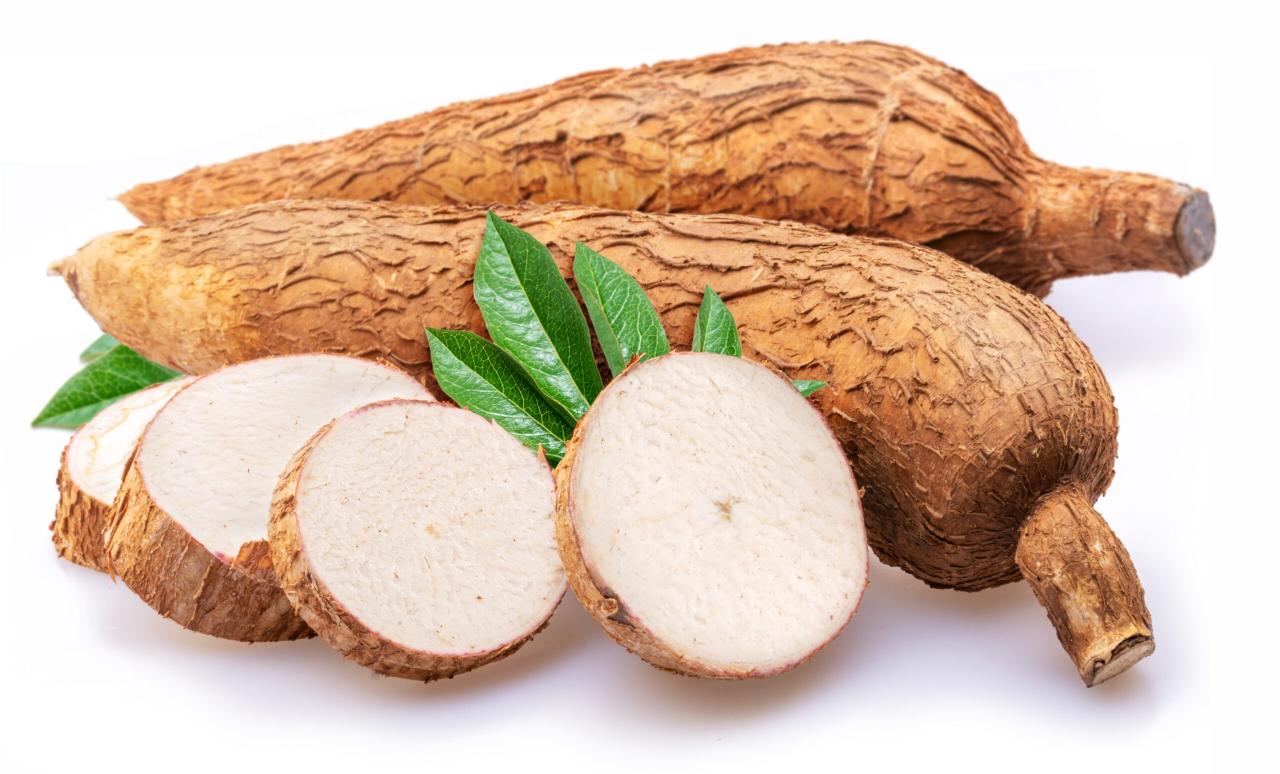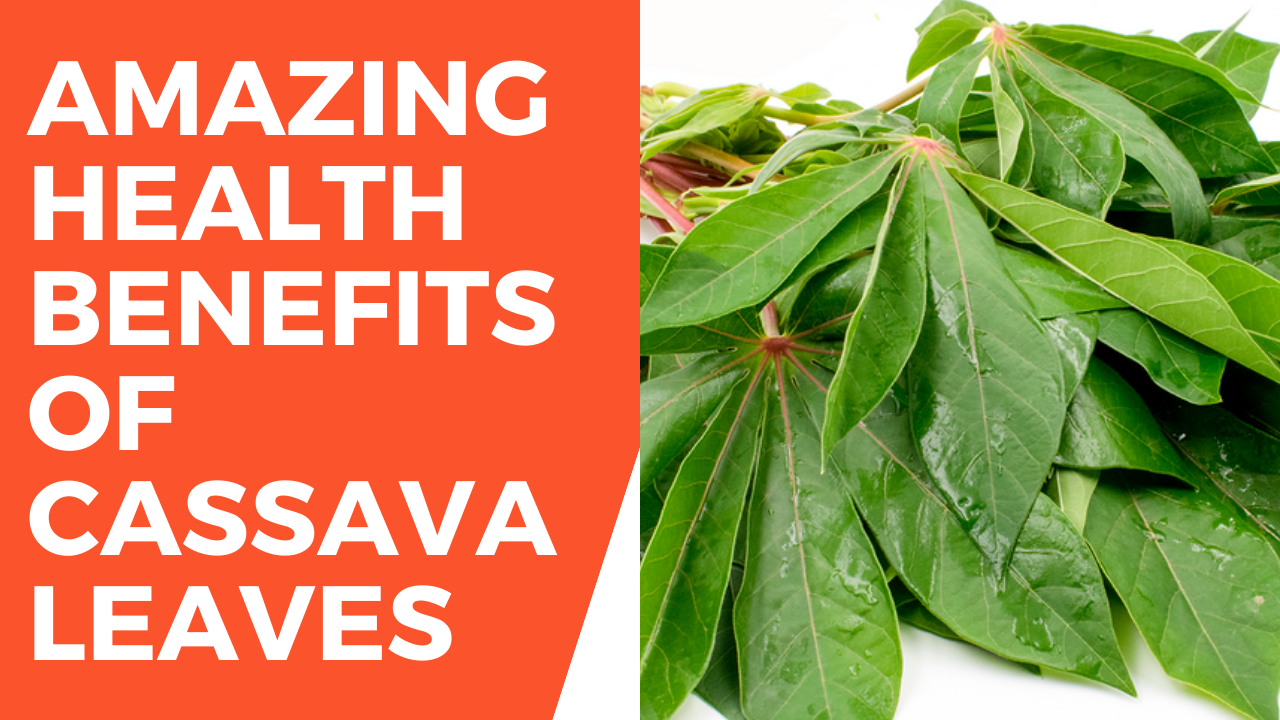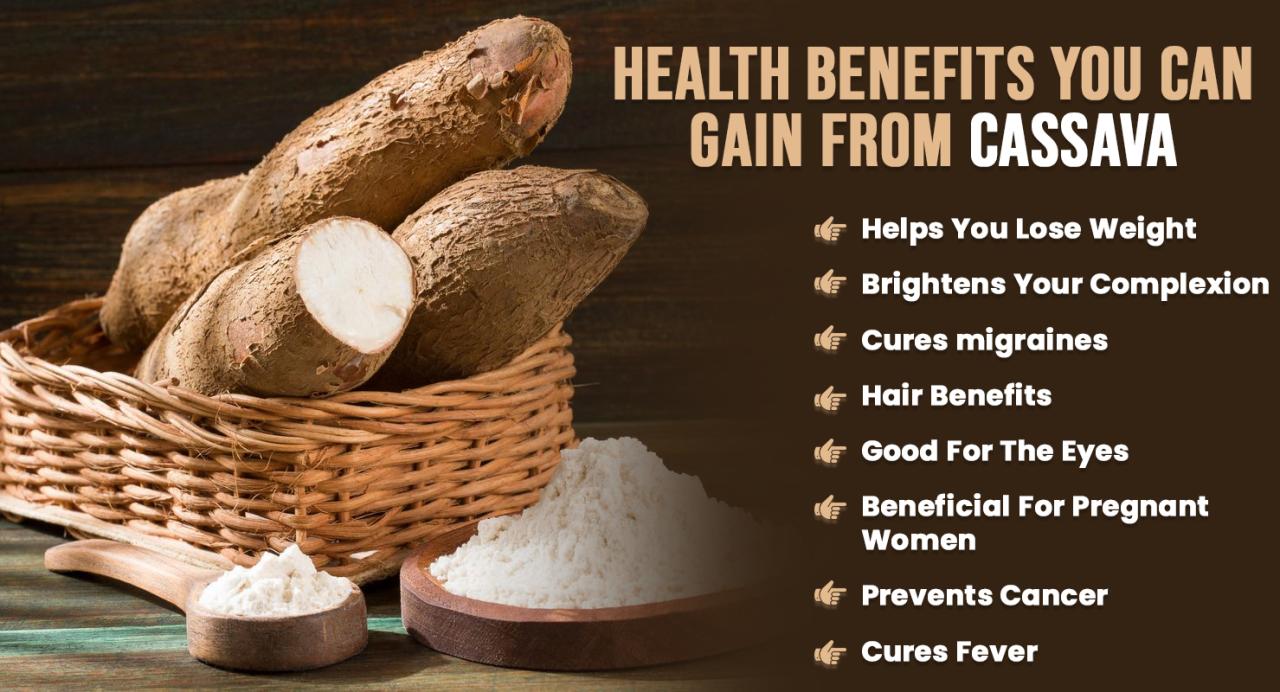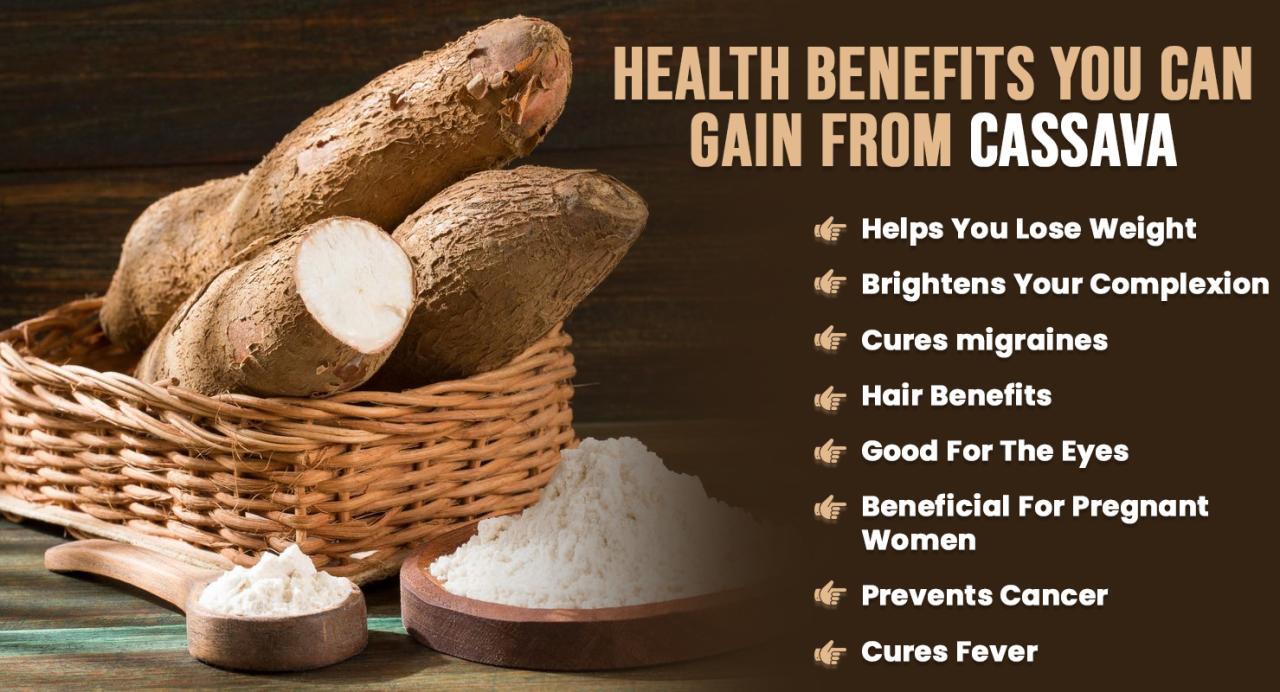How to Use Cassava Leaf for Maximum Health Benefits: Tips for Delicious and Nutritious Cooking – Cassava leaf, often overlooked as a culinary treasure, offers a wealth of nutritional benefits and a unique flavor profile. This versatile ingredient, a staple in many cultures, is a powerhouse of vitamins, minerals, and antioxidants.
From boosting immunity to improving digestion, cassava leaf has been recognized for its potential health-promoting properties for centuries. Beyond its nutritional value, cassava leaf provides a unique culinary experience, adding a distinct flavor and texture to a wide array of dishes.
This article delves into the world of cassava leaf, exploring its nutritional benefits, culinary applications, and tips for incorporating it into your diet.
Cassava leaf, also known as Manihot esculenta, is a leafy green vegetable that comes from the cassava plant. This plant is native to South America and is now widely cultivated in tropical and subtropical regions around the world. Cassava leaves have been a staple food source in many cultures for centuries, and they are known for their unique flavor and versatility in the kitchen.
Introduction to Cassava Leaf
Cassava leaf, also known as Manihot esculenta, is a highly nutritious green leafy vegetable that is a staple food in many tropical and subtropical regions. It is a rich source of essential vitamins, minerals, and antioxidants, making it a valuable addition to a healthy diet.
Nutritional Value of Cassava Leaf
Cassava leaf is an excellent source of various essential nutrients, including:
- Vitamins:Cassava leaf is particularly rich in vitamin A, vitamin C, vitamin K, and folate, all of which play vital roles in maintaining overall health and well-being.
- Minerals:It is also a good source of minerals such as iron, calcium, magnesium, and potassium, which are crucial for various bodily functions, including bone health, muscle function, and blood pressure regulation.
- Antioxidants:Cassava leaf contains a significant amount of antioxidants, including flavonoids and carotenoids, which help protect the body against cell damage caused by free radicals.
Cultural Significance of Cassava Leaf
Cassava leaf has a long and rich history in various cultures, particularly in tropical and subtropical regions where it is widely grown. It plays a significant role in the culinary traditions of many countries, including:
- Africa:Cassava leaf, known as “fufu” in some regions, is a popular ingredient in various traditional dishes, often served as a side dish or as a base for stews and soups.
- Latin America:In countries like Brazil and Colombia, cassava leaf is commonly used in dishes like “tapioca” and “acarajé,” showcasing its versatility and cultural importance.
- Asia:Cassava leaf is also consumed in Southeast Asia, particularly in countries like Thailand and Vietnam, where it is often used in stir-fries and curries.
History and Uses in Traditional Medicine
Cassava leaf has been used for medicinal purposes for centuries in traditional medicine systems around the world. Its leaves are believed to possess various health benefits, including:
- Anti-inflammatory properties:The antioxidants present in cassava leaf may help reduce inflammation in the body, which can contribute to various health conditions.
- Blood sugar regulation:Some studies suggest that cassava leaf may help regulate blood sugar levels, making it a potential benefit for individuals with diabetes.
- Antioxidant activity:The high antioxidant content of cassava leaf may help protect against cell damage caused by free radicals, potentially reducing the risk of chronic diseases.
Health Benefits of Cassava Leaf

Cassava leaf, a staple food in many tropical regions, is not only delicious but also packed with essential nutrients that offer a wide range of health benefits. This leafy green vegetable is a nutritional powerhouse, brimming with vitamins, minerals, and antioxidants, making it a valuable addition to a healthy diet.
Cassava leaves, a nutritional powerhouse, can be incorporated into a variety of dishes, offering a delicious and healthy way to boost your diet. Similar to the versatility of cassava leaves, perilla leaves, with their unique flavor profile, can add a delightful twist to meals.
For those interested in exploring this aromatic herb, check out this comprehensive guide on How to Grow and Use Perilla Leaf: Tips for Fresh and Flavorful Dishes , which delves into cultivation techniques and culinary applications. Just like perilla leaves, cassava leaves offer a world of culinary possibilities, waiting to be explored.
Boosting the Immune System
Cassava leaf is rich in vitamin C, an essential nutrient known for its immune-boosting properties. Vitamin C acts as an antioxidant, protecting cells from damage caused by free radicals, and supports the production of white blood cells, which are crucial for fighting off infections.
While cassava leaves offer a wealth of nutrients and can be incorporated into a variety of delicious dishes, creating a vibrant garden with stunning foliage can be equally rewarding. For those seeking to add a touch of tropical elegance to their outdoor spaces, consider planting a Jacaranda tree, whose vibrant purple blossoms create a breathtaking spectacle.
Discover the Best Practices for Growing Jacaranda Tree: Tips for Stunning Garden Beauty to learn more about cultivating this beautiful species. Once your garden is flourishing, you can return to the kitchen and experiment with different ways to prepare cassava leaves, ensuring you maximize their health benefits and enjoy a delicious meal.
A study published in the journal
Nutrients* found that consuming cassava leaf extract significantly increased the activity of immune cells in rats, suggesting its potential to enhance immune function in humans.
Improving Digestion
Cassava leaf is a good source of dietary fiber, which plays a vital role in maintaining a healthy digestive system. Fiber adds bulk to stool, promoting regular bowel movements and preventing constipation. It also helps regulate blood sugar levels and promotes the growth of beneficial bacteria in the gut, contributing to overall digestive health.
Reducing Inflammation
Cassava leaf contains anti-inflammatory compounds, such as flavonoids and polyphenols, which can help reduce inflammation throughout the body. Inflammation is a natural response to injury or infection, but chronic inflammation can contribute to a range of health problems, including heart disease, arthritis, and cancer.
Research suggests that cassava leaf extract may have anti-inflammatory effects, potentially mitigating these risks.
Managing Diabetes
Cassava leaf has shown promise in managing diabetes, a chronic condition characterized by high blood sugar levels. Studies have indicated that cassava leaf extract may help regulate blood sugar levels by improving insulin sensitivity. Insulin is a hormone that helps regulate blood sugar, and increased insulin sensitivity allows the body to use glucose more effectively.
Managing Hypertension
Hypertension, or high blood pressure, is a major risk factor for heart disease and stroke. Cassava leaf contains potassium, a mineral that helps lower blood pressure by counteracting the effects of sodium. Research suggests that consuming cassava leaf may help reduce blood pressure, potentially lowering the risk of cardiovascular complications.
Treating Anemia
Anemia is a condition characterized by a deficiency in red blood cells or hemoglobin, the protein in red blood cells that carries oxygen. Cassava leaf is a good source of iron, a mineral essential for red blood cell production. Consuming cassava leaf may help increase iron levels in the body, potentially improving symptoms of anemia.
Cooking with Cassava Leaf
Cassava leaf, a nutritious and versatile ingredient, can be incorporated into various dishes to enhance flavor and nutritional value. Its unique flavor profile and texture lend themselves well to diverse cooking methods, offering a range of culinary possibilities.
Boiling, How to Use Cassava Leaf for Maximum Health Benefits: Tips for Delicious and Nutritious Cooking
Boiling is a simple and effective method for preparing cassava leaf. It helps to soften the leaves and remove any bitterness. To boil cassava leaf, simply wash the leaves thoroughly and place them in a pot of boiling water. Add a pinch of salt and simmer for about 10-15 minutes, or until the leaves are tender.
The boiled cassava leaf can then be used in soups, stews, or as a side dish.
Steaming
Steaming is another gentle cooking method that preserves the nutrients and flavor of cassava leaf. To steam cassava leaf, place the washed leaves in a steamer basket over a pot of boiling water. Cover the pot and steam for about 10-15 minutes, or until the leaves are tender.
Steamed cassava leaf can be enjoyed as a side dish or used in salads.
Stir-Frying
Stir-frying is a quick and flavorful way to cook cassava leaf. Heat some oil in a wok or frying pan over medium heat. Add the washed and chopped cassava leaf and stir-fry for about 5-7 minutes, or until the leaves are wilted and tender.
You can add other ingredients such as garlic, ginger, onions, and spices to enhance the flavor.
Making Soups
Cassava leaf can be used to make delicious and nutritious soups. To make a cassava leaf soup, simmer the boiled cassava leaf in a broth of your choice, such as chicken broth or vegetable broth. Add other ingredients such as vegetables, meat, or seafood to create a hearty and flavorful soup.
Ingredients that Complement Cassava Leaf
Cassava leaf pairs well with a variety of ingredients, adding depth and complexity to dishes. Here are some ingredients that complement cassava leaf in various dishes:
- Vegetables:Tomatoes, onions, garlic, ginger, bell peppers, carrots, spinach, and mushrooms.
- Meat:Chicken, beef, pork, and fish.
- Seafood:Shrimp, crab, and fish.
- Spices:Curry powder, turmeric, cumin, coriander, paprika, and chili peppers.
- Herbs:Cilantro, parsley, mint, and basil.
- Nuts and Seeds:Peanuts, sesame seeds, and sunflower seeds.
Delicious Cassava Leaf Recipes
Cassava leaves are a versatile ingredient that can be used to create a variety of delicious and nutritious dishes. From traditional African stews to Asian stir-fries, there are countless ways to incorporate cassava leaves into your meals.
Traditional African Dishes
Cassava leaves are a staple ingredient in many African cuisines. Here are a few traditional recipes:
- Egusi Soup (Nigeria):This rich and flavorful soup is made with ground melon seeds, vegetables, and meat or fish. Cassava leaves are often added for their nutritional value and earthy flavor.
- Ndole (Cameroon):This popular Cameroonian dish features cassava leaves cooked with peanut butter, spices, and often fish or meat.
- Mpona (Congo):Mpona is a hearty stew made with cassava leaves, palm oil, and a variety of vegetables. It is often served with fufu, a starchy dough made from cassava.
Vegetarian and Vegan Recipes
Cassava leaves are an excellent source of protein and vitamins, making them a great addition to vegetarian and vegan diets. Here are some ideas for delicious and nutritious dishes:
- Cassava Leaf Stir-Fry:This quick and easy dish is perfect for a weeknight meal. Simply stir-fry cassava leaves with your favorite vegetables, soy sauce, and ginger.
- Cassava Leaf Curry:This flavorful curry can be made with a variety of spices and vegetables. Coconut milk adds a creamy texture and richness to the dish.
- Cassava Leaf Soup:This hearty soup is a great way to warm up on a cold day. You can add a variety of vegetables, lentils, or beans to the soup for added protein and fiber.
Tips for Cooking Cassava Leaves
- Blanch the leaves:Blanching cassava leaves before cooking helps to remove any bitterness and makes them more tender. To blanch, simply immerse the leaves in boiling water for a few minutes, then drain them and rinse with cold water.
- Use fresh leaves:Fresh cassava leaves are the best option for cooking. If you are using frozen leaves, make sure to thaw them completely before cooking.
- Cook until tender:Cassava leaves should be cooked until they are tender and wilted. Overcooked leaves can become mushy and lose their flavor.
Safety Considerations and Precautions: How To Use Cassava Leaf For Maximum Health Benefits: Tips For Delicious And Nutritious Cooking
While cassava leaf offers numerous health benefits, it’s crucial to consume it responsibly to avoid potential side effects. Like any food, there are certain considerations to keep in mind.
Potential Side Effects and Allergic Reactions
Cassava leaf, while generally safe for consumption, can cause adverse reactions in some individuals. It’s important to be aware of these potential issues and take necessary precautions.
- Cyanide Content:Cassava leaf contains cyanogenic glycosides, which break down into hydrogen cyanide upon consumption. While cooking methods generally eliminate most of this cyanide, raw or improperly prepared cassava leaf can lead to cyanide poisoning. Symptoms include dizziness, nausea, vomiting, and even death in severe cases.
- Allergic Reactions:Some individuals may be allergic to cassava leaf, experiencing symptoms like skin rash, itching, swelling, or difficulty breathing. If you have a history of food allergies, it’s crucial to consult with a healthcare professional before consuming cassava leaf.
- Gastrointestinal Issues:Consuming cassava leaf in large quantities or without proper preparation can cause digestive discomfort, including diarrhea, bloating, and stomach cramps.
Safe Consumption and Appropriate Dosage
To ensure safe consumption, follow these guidelines:
- Proper Cooking:Always cook cassava leaf thoroughly before consumption. Boiling or steaming helps to eliminate most of the cyanide content.
- Start Small:Begin with small portions of cassava leaf and gradually increase the amount as tolerated. This allows your body to adjust and minimizes the risk of adverse reactions.
- Consult a Healthcare Professional:If you have any underlying health conditions, are pregnant, breastfeeding, or taking medications, it’s essential to consult with a healthcare professional before adding cassava leaf to your diet.
Storing and Preserving Cassava Leaf
Proper storage and preservation are crucial for maintaining the freshness and nutritional value of cassava leaf.
- Refrigeration:Store fresh cassava leaf in a sealed plastic bag or container in the refrigerator for up to 3-4 days. Avoid washing the leaves before storing, as this can accelerate spoilage.
- Freezing:For longer storage, you can freeze cassava leaf. Blanch the leaves for a few minutes in boiling water, then drain and cool completely. Pack them in freezer-safe bags or containers, and store them in the freezer for up to 3-6 months.
Conclusion (Optional)

Cassava leaf, a nutrient-rich and versatile ingredient, offers numerous health benefits. From boosting immunity to aiding in weight management, incorporating cassava leaf into your diet can contribute to overall well-being. By exploring various cooking methods and recipes, you can unlock the full potential of this leafy green.
Remember to prioritize safety by selecting fresh, high-quality cassava leaves and ensuring proper preparation to avoid any potential health risks.
Exploring Further
Cassava leaf is a fascinating ingredient with a rich history and diverse applications. Here are some areas for further exploration:
- Traditional Uses:Delve into the traditional uses of cassava leaf in different cultures and how it has been incorporated into their culinary practices and medicinal systems.
- Nutritional Research:Stay updated on ongoing research exploring the specific nutrients and bioactive compounds present in cassava leaf and their potential health implications.
- Innovative Recipes:Experiment with innovative recipes that showcase cassava leaf’s versatility, from salads and soups to smoothies and stir-fries.
Final Conclusion

Cassava leaf is a nutritional powerhouse and a versatile ingredient that can add a unique flavor and texture to your meals. From boosting immunity to improving digestion, its health benefits are undeniable. By incorporating cassava leaf into your diet, you can enjoy a delicious and nutritious meal while reaping the rewards of its remarkable properties.
So, don’t hesitate to explore the world of cassava leaf and unlock its culinary potential.
Helpful Answers
Is cassava leaf safe to eat?
Yes, cassava leaf is safe to eat when properly prepared. However, it’s crucial to cook it thoroughly to eliminate any potential toxins.
How can I tell if cassava leaf is fresh?
Fresh cassava leaves are bright green, crisp, and free from any signs of wilting or discoloration.
What are some common ways to prepare cassava leaf?
Cassava leaf can be boiled, steamed, stir-fried, or used in soups and stews.
Can I freeze cassava leaf?
Yes, you can freeze cassava leaf for later use. Blanch it first in boiling water for a few minutes, then drain and freeze in airtight containers.
